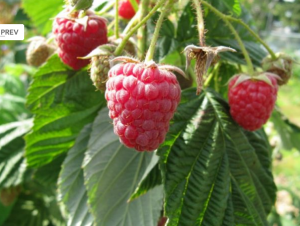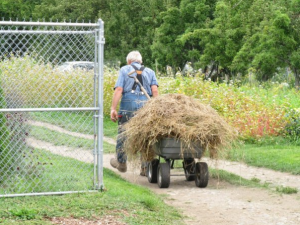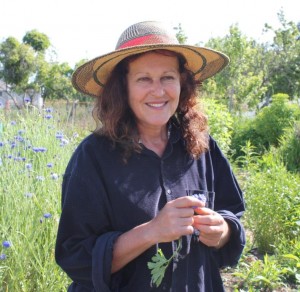 We need more places like Haliburton Farm. Last month, I partook in a farm tour, dinner and conversation there. This week I visited this local farm to chat a bit more with Elmarie Roberts, one of the farmers working the property. Our conversation reinforced my view that Haliburton Farm is a powerful, collaborative community model of sustainable farming, and living! Community education and training are central to the Farm’s vision.
We need more places like Haliburton Farm. Last month, I partook in a farm tour, dinner and conversation there. This week I visited this local farm to chat a bit more with Elmarie Roberts, one of the farmers working the property. Our conversation reinforced my view that Haliburton Farm is a powerful, collaborative community model of sustainable farming, and living! Community education and training are central to the Farm’s vision.
Backgrounder
Haliburton Farm is a publicly-owned farm within the Agricultural Land Reserve (a provincial zone in which agriculture is recognized as the priority use). In 2001, the 4 hectare (9 acre) property was spared from housing development by a group of concerned citizens and the District of Saanich, who purchased the land. A non-profit society was established in 2003 to develop plans for, and manage, Haliburton Farm. The society leases the Farm, for a nominal fee, from the District.
The Farm seeks to be a leader of community-supported, small-scale, sustainable, economically viable, organic agriculture, carried out in harmony with local ecosystems. Three farming businesses work the property. Elmarie’s Sunbird Farms (on one acre shared with another grower) is one of them.
A model of good collaboration and community
In conversation with Elmarie, the collaborative nature of the Farm shines through. The growers on the farm work together in a transparent way, without a farm manager. They plan growing operations to avoid duplication, share market costs, appreciate the work of volunteers (e.g., helping with signage), and support initiative to take this community farm model to other municipalities.
 Haliburton Farm demonstrates a positive, collaborative community model through:
Haliburton Farm demonstrates a positive, collaborative community model through:
- Citizen action; maintaining ALR promise, creating/running a society, planning/managing a farm
- Community engagement; of young/new farmers, of women, of neighbours, of government, of local business (e.g., local chefs teaching organic cooking classes on-site), of community organizations, of volunteers from all stripes
- Vision and systems thinking; connecting people to each other, people to the land
- Sustainability; fostering long-term relationships, between people, between people and other living systems
- Local living economy (thinking of BALLE and our local VBN); values-based, balancing economic with social and environment good
- Collaboration; between neighbours, municipality, citizens, business
- Stewardship; no farm manager; success requires ongoing collaboration between stakeholders
- Opportunity; learning opportunities, e.g., for farmers, anybody wanting to learn organic farming practices, youth/schools, non-profit groups, researchers
- Managing transitions; enabling farmers new to the profession, an interim place to develop their skills, and generate an income through produce sales (two big challenges facing new, independent farmers are land ownership and capital)
- Open model; accessible to others, anywhere (via web)
A farmer’s story.
 Introducing Elmarie Roberts (pictured left)…
Introducing Elmarie Roberts (pictured left)…
Before her recent entry into farming, Elmarie did a few other things; including 12 years teaching ESL in South Africa, operating a sustainable retail business in downtown Victoria, and six years working for St. Vincent de Paul, a society dedicated to helping the poor. Building on growing up in a nursery environment in South Africa, an organic farming course she took at Camosun College, and a brief apprenticeship period, she assumed a 4-year lease on 1-acre of Haliburton Farm. The lease has an option to renew (at a higher rate), or be transferred to another grower who completes an application to be approved by the Society. (Elmarie would like to pass her farm on to another “getting started” farmer, and own/operate her own farm somewhere else.)
Elmarie grows a wide variety of vegetables, edible flowers, fruits and herbs. Adhering to certified organic practices, including integrated pest management, and companion planting, she sells her produce to local markets, retailers, and restaurants. In almost all cases, she delivers her produce (vs. it being picked up) people like the farmer visiting!.
In my little tour of her farm, Elmarie educated me about companion plants, garlic scapes, bordeaux spinach, and much more. Thanks Emarie for your patience with this non-farmer!
Do you have a community farm in your area? How does is differ with the Haliburton model?
Photo credits: Rhona McAdam
If you enjoyed this post, please consider leaving a comment or subscribing to my blog. Thanks, Ben.

[…] Haliburton Community Farm: A collaborative model worth emulating […]